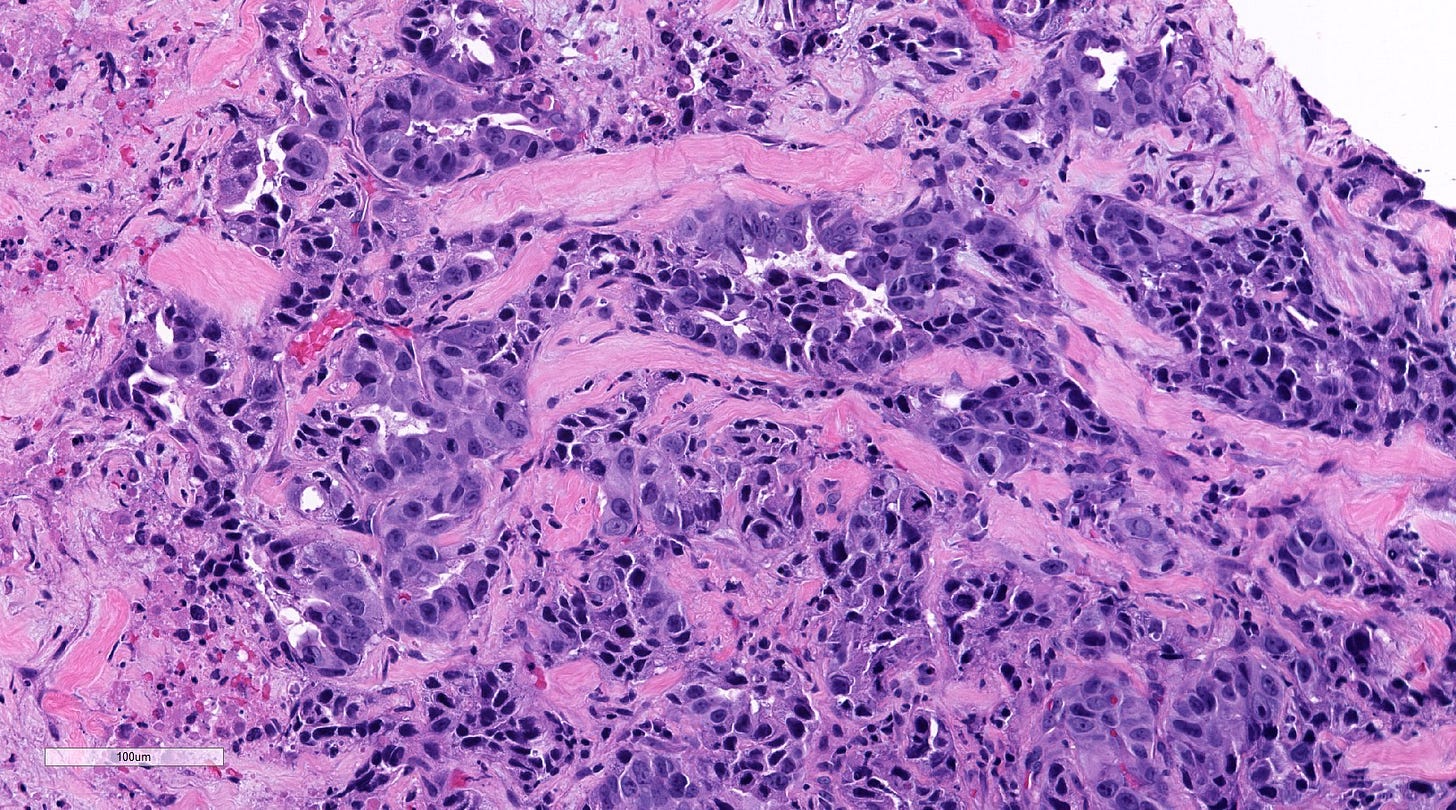The phrase “breast cancer” typically includes all types of cancer arising in the breast. They are classified and characterized based on:
Microscopic (histologic) appearance of the cancer cells and surrounding tissue
Note that the World Health Organization (WHO) classification of breast cancer and the Table of Contents for the Breast chapter of my website show a large number of breast cancer types (carcinomas and sarcomas are types of cancer);
Molecular or protein related changes in the cancer cells affecting hormone receptors, HER2 and others (see here and the Stains section of the Table of Contents);
Its stage or extent of disease; and
Its grade or the aggressiveness of the tumor cells (the images below are from this link).
The goal of cancer grading systems is to classify breast cancers into categories with different survival statistics, which then guide treatment.
This determination is quite complicated. It relies on clinical trials and the participation of thousands of patients to assess the reliability of these grading systems and to continually improve them over time.
Many classification systems have been proposed for breast cancer, based on either new systems or modifications of old systems. Today, the preferred grading system is the Nottingham combined histologic grade, also called the Elston-Ellis modification of the Scarff-Bloom-Richardson grading system.
This grading system is based on 3 features of the breast cancer viewed under the microscope, using a “representative” area of the cancer:
tubule and gland formation for the cancer cells;
nuclear pleomorphism or variations in the size and shape of the cancer cell nuclei; and
the number of mitotic figures in the most active areas of the cancer.
Each feature is given a score of 1, 2 or 3 points, and the total score for the 3 features is then totaled and used to determine the cancer grade:
3 - 5 points: well differentiated (grade I) - best survival statistics.
6 - 7 points: moderately differentiated (grade II).
8 - 9 points: poorly differentiated (grade III) - worst survival statistics.
Details on assigning the scores are indicated here.
Here are examples of the 3 breast cancer grades:
Well differentiated breast cancers (overall score of 3-5)


Moderately differentiated breast cancers (overall score of 6-7)


Poorly differentiated breast cancers (overall score of 8-9)


Other recent breast cancer essays:
My mammogram, 8 September 2023
Cancer images - inflammatory breast cancer, 27 March 2023
Index to Nat’s Substack articles\
If you like these essays, please share them with others.
Follow me on Substack or LinkedIn or through our Curing Cancer Newsletter.
Follow our Curing Cancer Network on LinkedIn and Twitter. Each week we post interesting cancer related images of malignancies with diagnoses.
Latest versions of our cancer related documents:
American Code Against Cancer (how you can prevent cancer)
Email me at Nat@PathologyOutlines.com - Unfortunately, I cannot provide medical advice.
I also publish Notes at https://substack.com/note. Subscribers will automatically see my notes.
Other social media - Tribel: @nat385440b, Instagram / Threads: npernickmich



